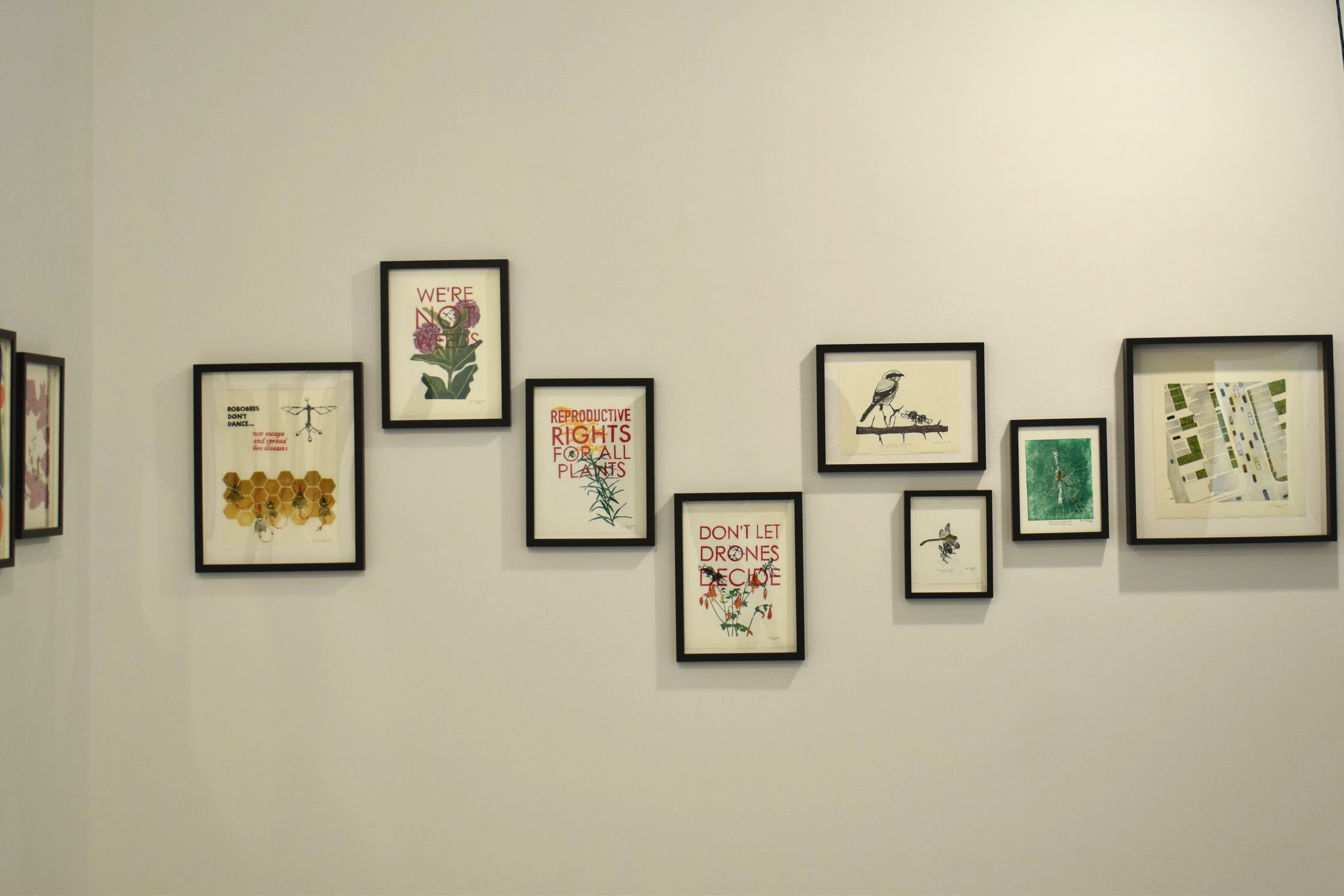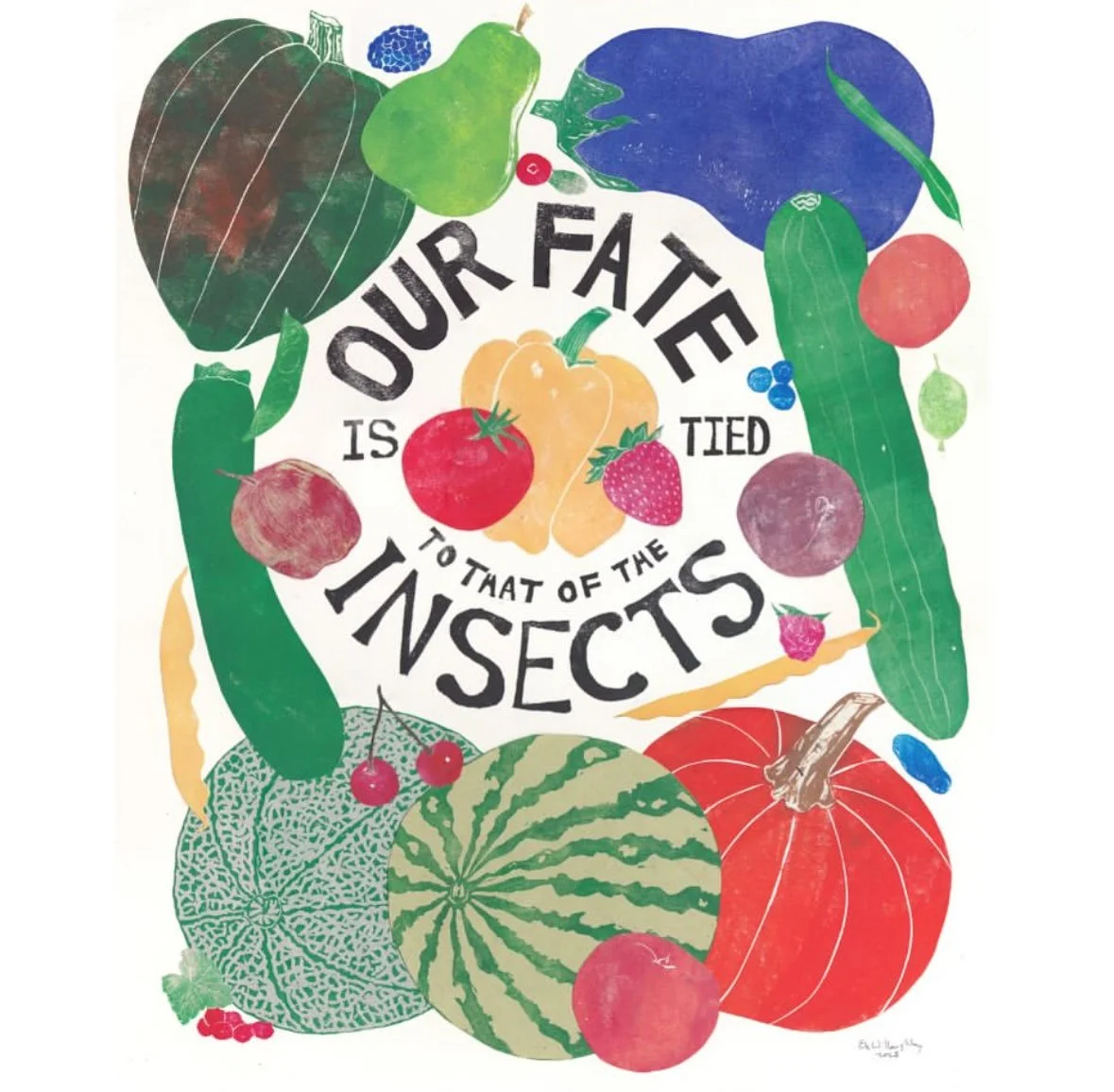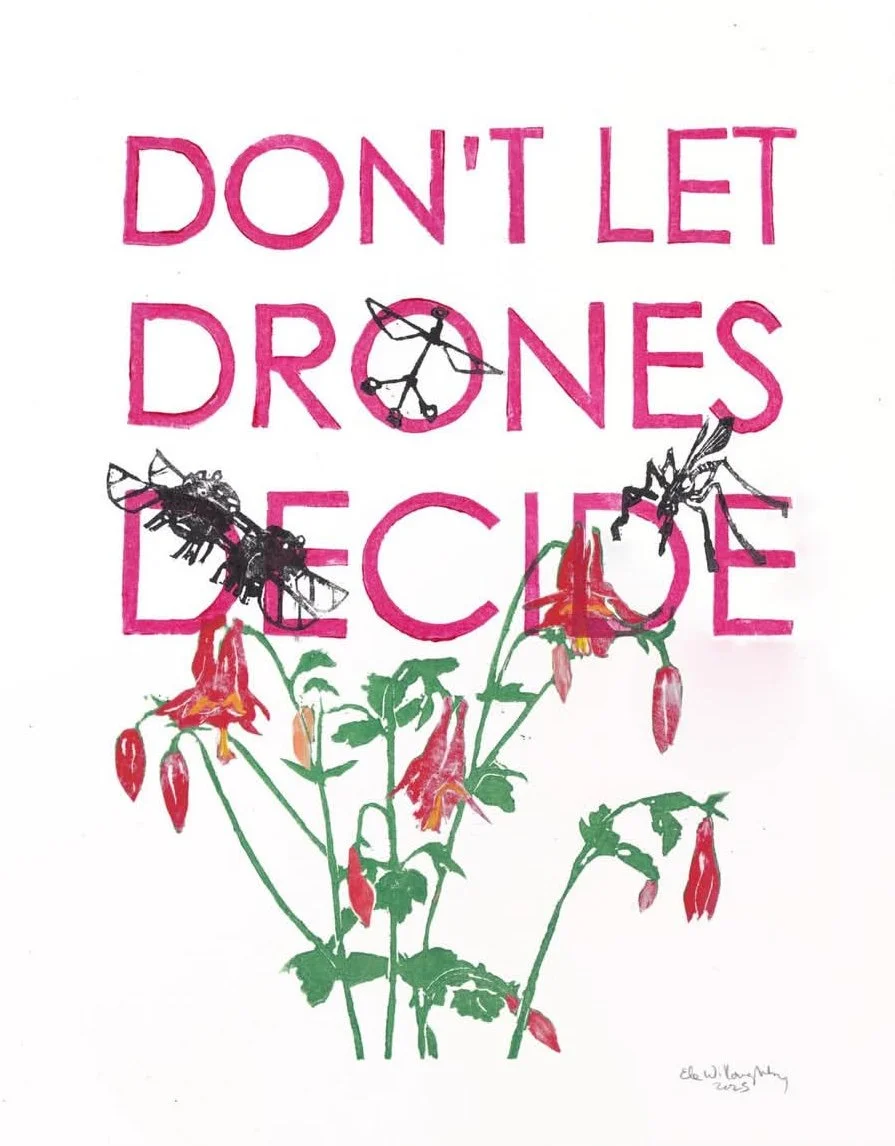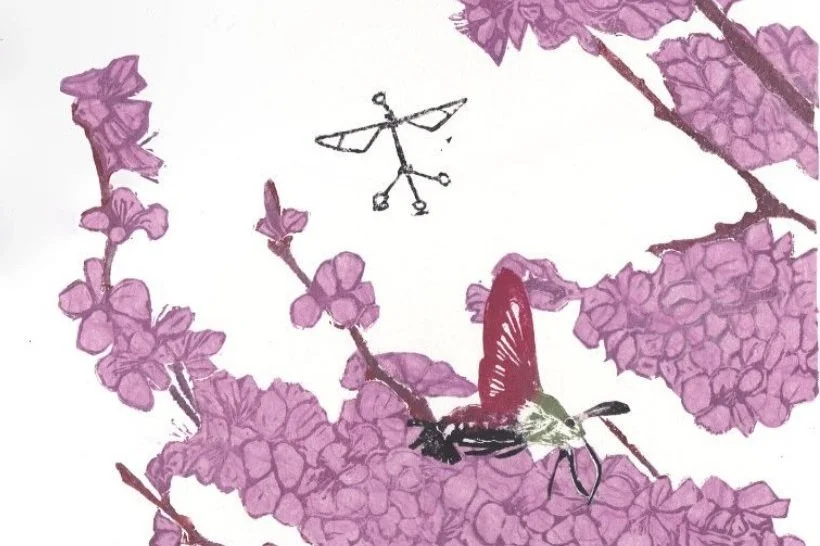Pollination
Ele Willoughby
“There has been a precipitous drop in the number of insect pollinators, both species diversity and sheer numbers of animals. Entomologists speak of the ‘insect apocalypse.’ I can imagine a range of outcomes for the future of pollination, from a dystopian continuation of this trend to a world where insect pollinators have been largely eradicated and we are required to rely on technological replacements, to a utopian shift in priorities where restoring habitat and fostering pollinator populations is built into our everyday lives and cities. Between these extremes is a world where we work to preserve pollinators but pragmatically employ some artificial pollination in agriculture.”
“My instinctive response to the research and development of pollination drones was horror; we have so disrupted our world where plants co-evolved with the pollinators which serve them that we have to develop robots to play the role of species we have harmed. Further, insects play a role in food webs that drones cannot. Will we pollinate all plants, or only lucrative crops? But perhaps, pollination drones may prove safer to wild bees than our reliance on non-native European honeybees which can out-compete native species and spread bee diseases.”
Ele Willoughby
A landscape without pollinators
“Threats to pollinators (primarily wild bees and other insects, but also birds and some mammals) are common worldwide but every story is a local one with specific local species, ecosystems, threats and solutions. The species depicted here live in southern Ontario, but I want viewers to understand that there are analogous issues wherever they are.”
Ele Willoughby
“Feeling dizzy, he let his eyes rest unfocused on the buzzing field until he almost saw honeybees.”
Quote from Rosemary Mosco’s Hive Mind, coming fall 2025










